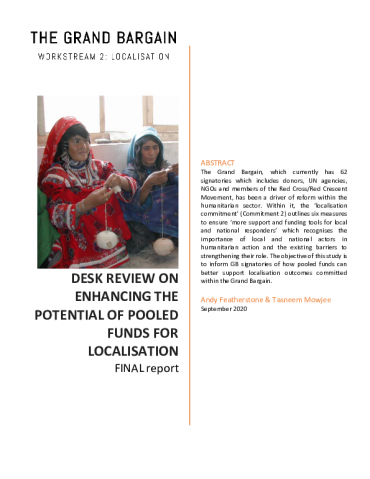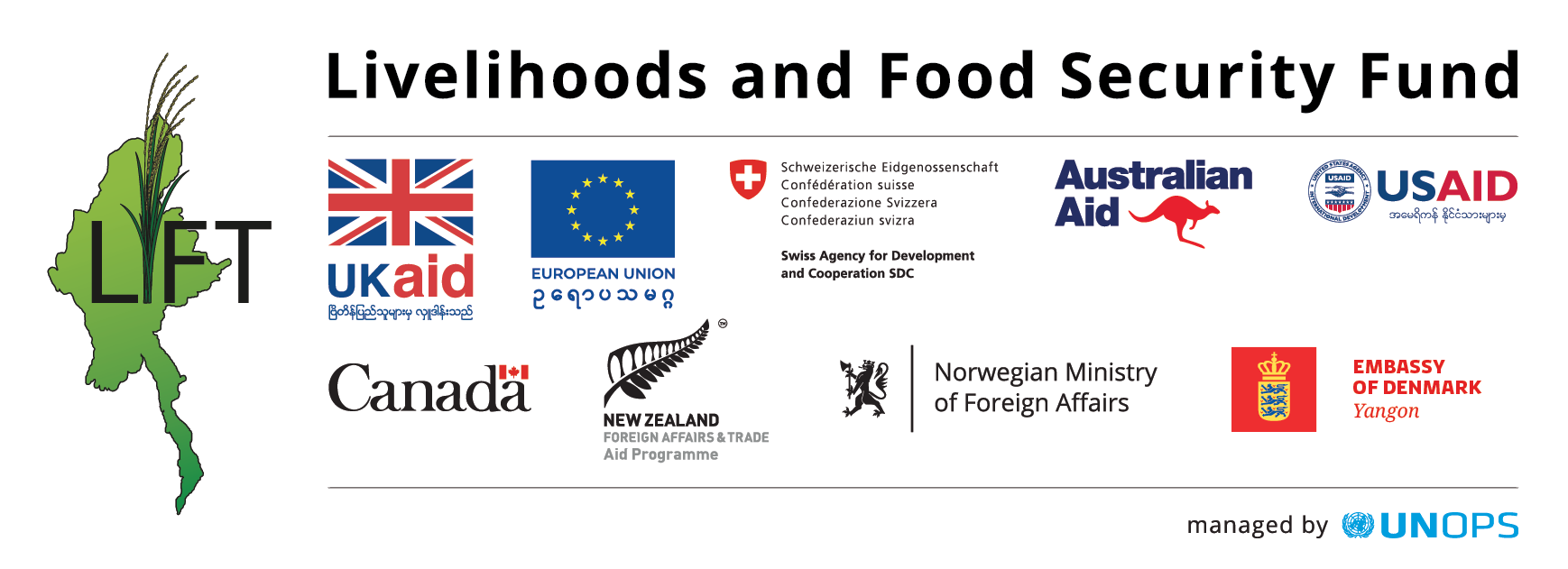
The Grand Bargain, which currently has 62 signatories which includes donors, UN agencies, NGOs and members of the Red Cross/Red Crescent Movement, has been a driver of reform within the humanitarian sector. Within it, the ‘localisation commitment’ (Commitment 2) outlines six measures to ensure ‘more support and funding tools for local and national responders’ which recognises the importance of local and national actors in humanitarian action and the existing barriers to strengthening their role. The objective of this study is to inform GB signatories of how pooled funds can better support localisation outcomes committed within the Grand Bargain.
What is the Grand Bargain?
The ‘Grand Bargain’ is an agreement between more than 50 of the biggest donors and aid providers worldwide. It aims to get more aid into the hands of people in need. It is essentially a ‘Grand Bargain on efficiency’ between donors and humanitarian organizations to reduce the costs and improve the effectiveness of humanitarian action.
The Grand Bargain’s Commitments on Localisation
- Increase and support multi-year investment in the institutional capacities of local and national responders, including preparedness, response and coordination capacities, especially in fragile contexts and where communities are vulnerable to armed conflicts, disasters, recurrent outbreaks and the effects of climate change. We should achieve this through collaboration with development partners and incorporate capacity strengthening in partnership agreements.
- Understand better and work to remove or reduce barriers that prevent organisations and donors from partnering with local and national responders in order to lessen their administrative burden.
- Support and complement national coordination mechanisms where they exist and include local and national responders in international coordination mechanisms as appropriate and in keeping with humanitarian principles.
- Achieve by 2020 a global, aggregated target of at least 25% of humanitarian funding to local and national responders as directly as possible to improve outcomes for affected people and reduce transactional costs.
- Develop, with the Inter-Agency Standing Committee (IASC), and apply a ‘localisation’ marker to measure direct and indirect funding to local and national responders.
- Make greater use of funding tools which increase and improve assistance delivered by local and national responders, such as the UN-led country-based pooled funds (CBPF), International Federation of the Red Cross and Red Crescent Societies (IFRC) Disaster Relief Emergency Fund (DREF) and NGO-led and other pooled funds.
Findings of the study have described that pooled funds are an important conduit for donors seeking to meet their localisation commitments as many are unable to offer direct funding themselves. While the pooled funds included in the desk review are all very different and so it is difficult to make direct comparisons, they collectively make an important contribution towards localisation.
As part of a desk review of the study, Livelihoods and Food Security Fund (LIFT) has shared with the study team about its approach, collaboration with local civil society organisation and approaches that are applied in the operations, grant allocation and programming.
The study remarks "LIFT in Myanmar offers an example of ground-breaking practice on the issue of sharing overhead costs, having negotiated and agreed a fair-share approach that is applied consistently to all partners, irrespective of whether funding is received directly, or indirectly."
Read more in the full study report.


